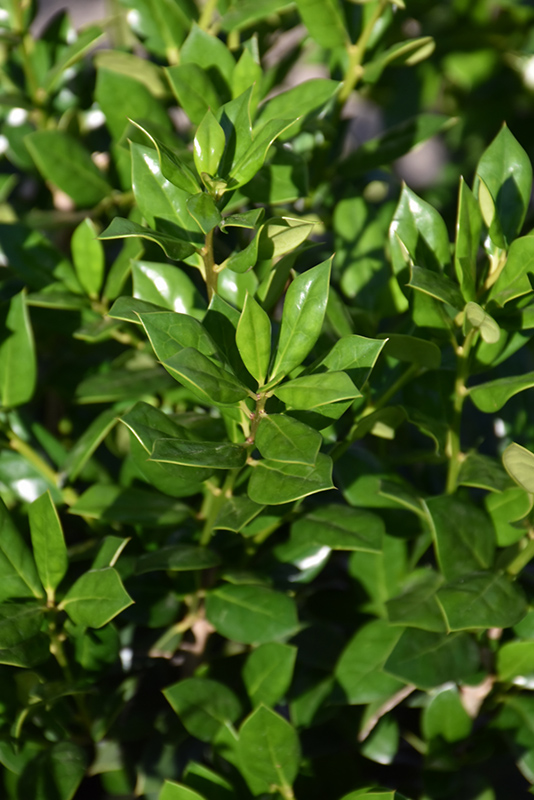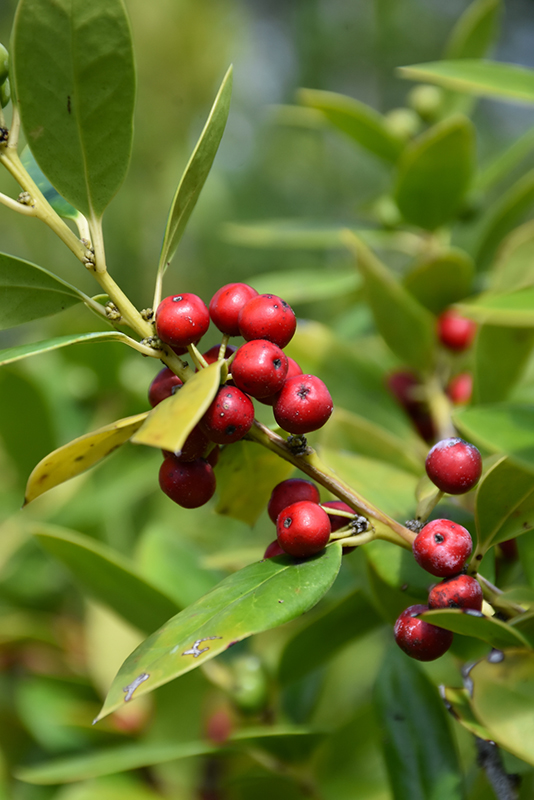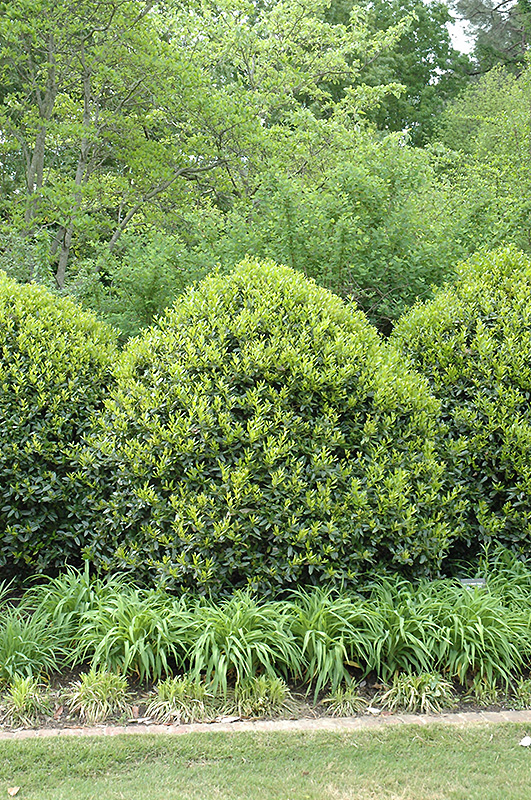Needlepoint Chinese Holly
Ilex cornuta 'Needlepoint'
Height: 15 feet
Spread: 15 feet
Sunlight:
![]()
![]()
Hardiness Zone: 7a
Description:
A handsome variety with glossy, gently twisted deep green foliage, a heavy crop of bright red berries throughout the winter; can grow quite large, ideal for massing or screening where a small broad plant is called for
Ornamental Features
Needlepoint Chinese Holly is primarily grown for its highly ornamental fruit. It features an abundance of magnificent red berries in late fall. It has attractive dark green evergreen foliage which emerges chartreuse in spring. The glossy narrow leaves are highly ornamental and remain dark green throughout the winter.
Landscape Attributes
Needlepoint Chinese Holly is a multi-stemmed evergreen shrub with a more or less rounded form. Its average texture blends into the landscape, but can be balanced by one or two finer or coarser trees or shrubs for an effective composition.
This is a relatively low maintenance shrub, and is best pruned in late winter once the threat of extreme cold has passed. It is a good choice for attracting birds and bees to your yard, but is not particularly attractive to deer who tend to leave it alone in favor of tastier treats. It has no significant negative characteristics.
Needlepoint Chinese Holly is recommended for the following landscape applications;
- Accent
- Mass Planting
- Hedges/Screening
- Naturalizing And Woodland Gardens
Planting & Growing
Needlepoint Chinese Holly will grow to be about 15 feet tall at maturity, with a spread of 15 feet. It has a low canopy, and is suitable for planting under power lines. It grows at a medium rate, and under ideal conditions can be expected to live for 50 years or more.
This shrub does best in full sun to partial shade. It prefers to grow in moist to wet soil, and will even tolerate some standing water. It is particular about its soil conditions, with a strong preference for rich, acidic soils. It is quite intolerant of urban pollution, therefore inner city or urban streetside plantings are best avoided, and will benefit from being planted in a relatively sheltered location. Consider applying a thick mulch around the root zone in winter to protect it in exposed locations or colder microclimates. This is a selected variety of a species not originally from North America, and parts of it are known to be toxic to humans and animals, so care should be exercised in planting it around children and pets.




